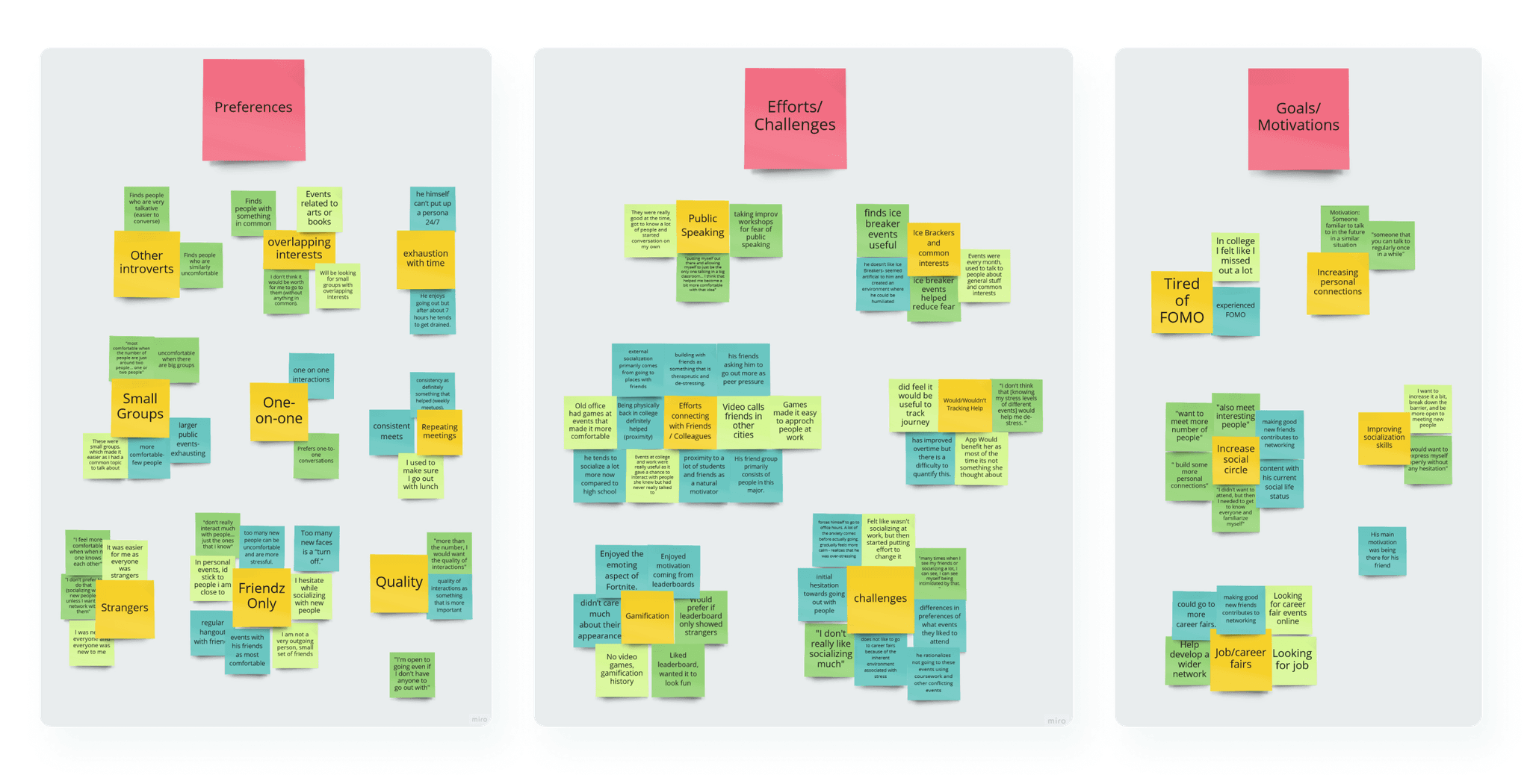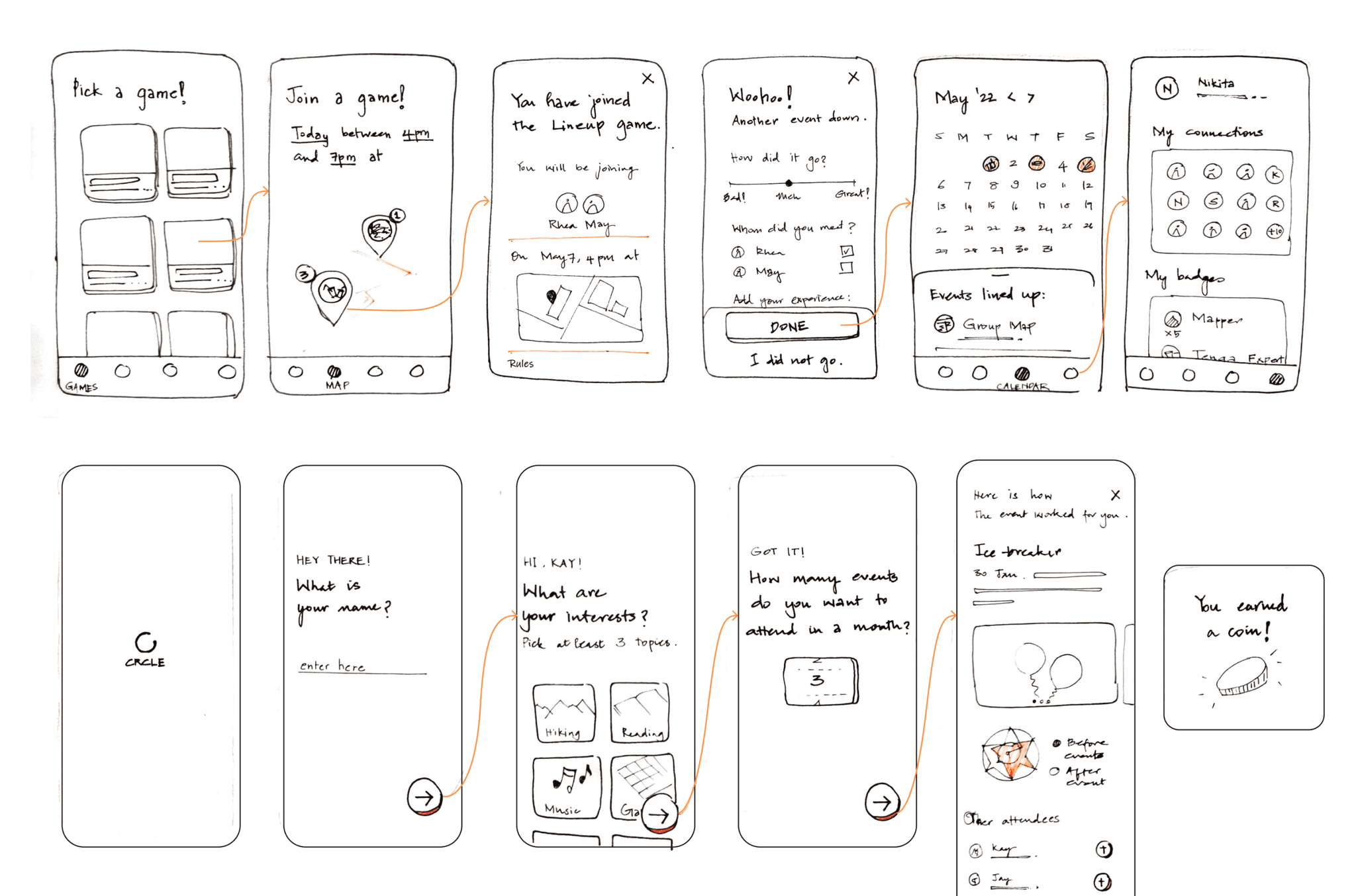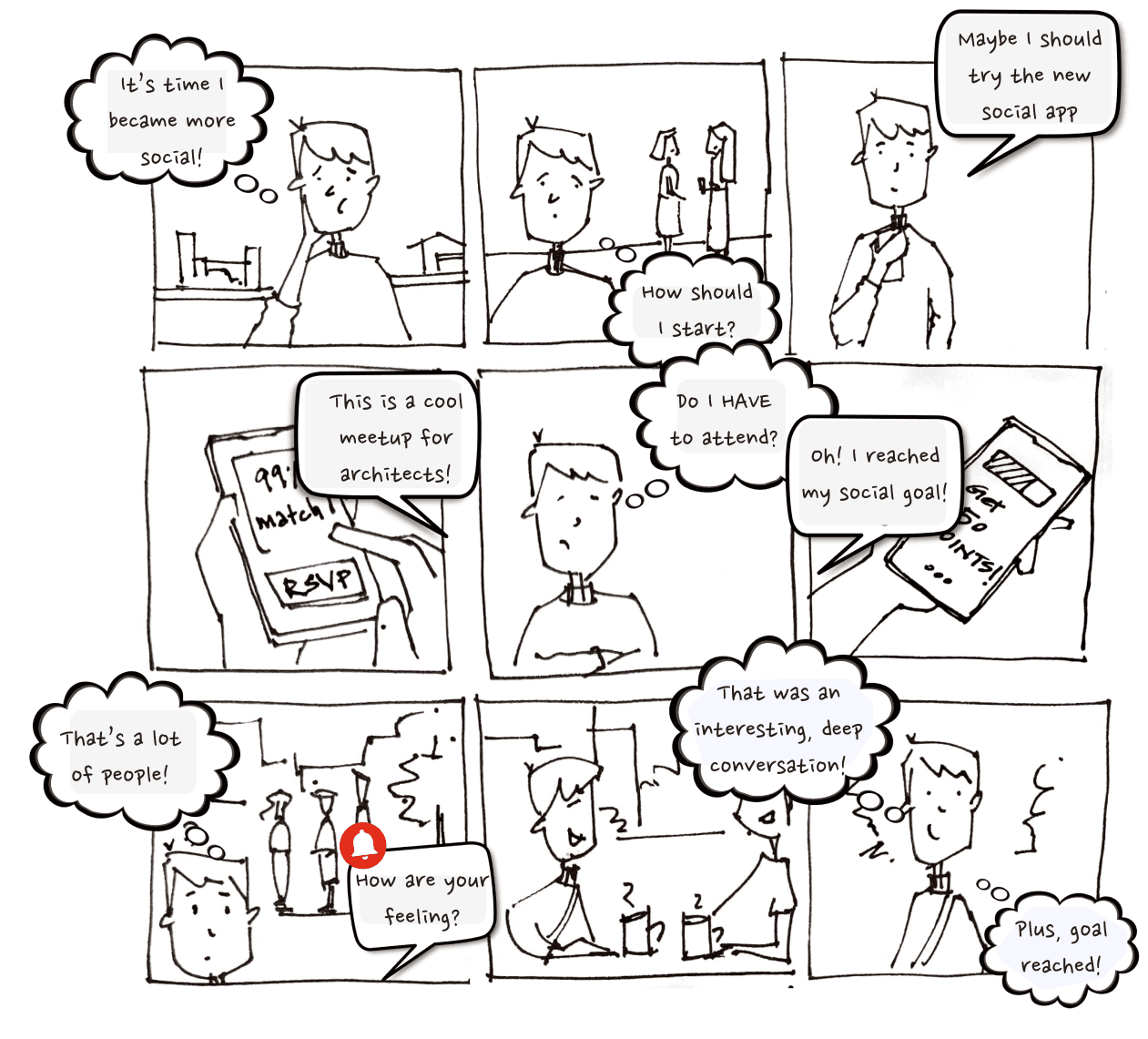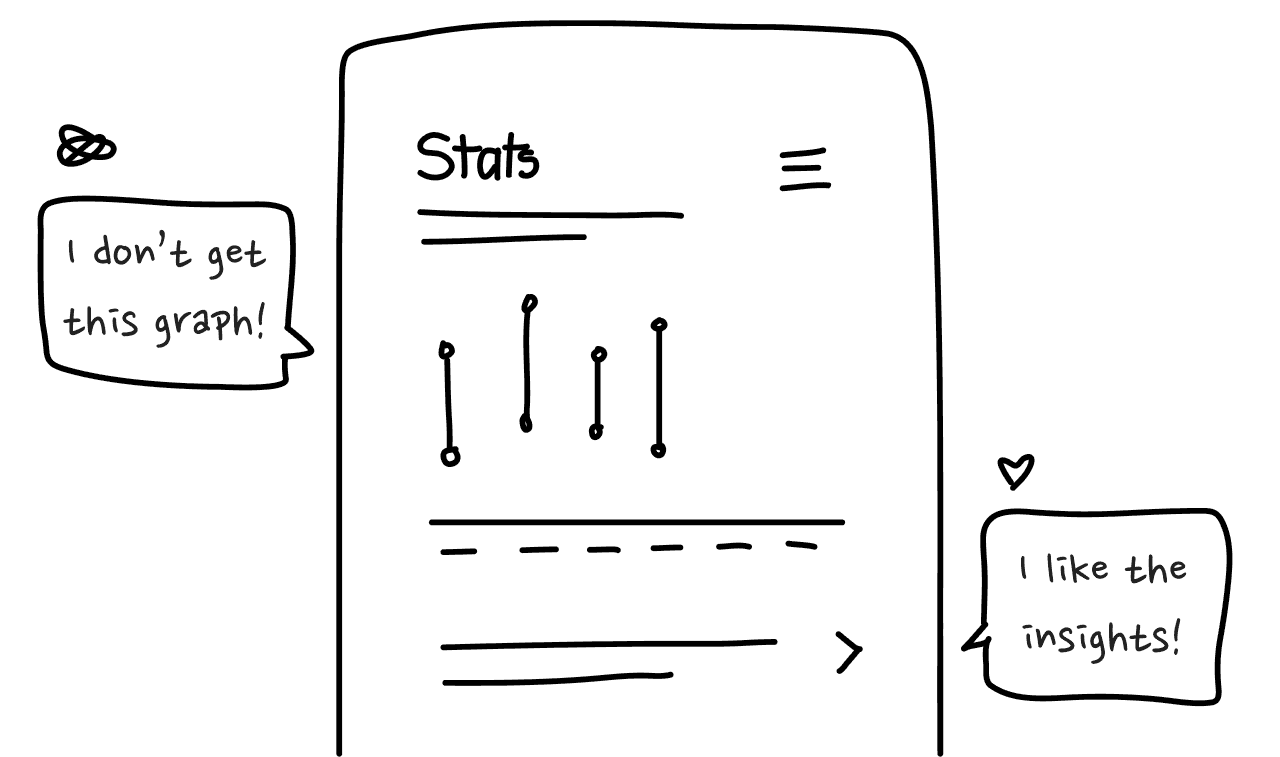Finding social balance
Our aim was to develop a solution to help introverts maintain a balance between social and personal well-being, as part of our class on Personal Health Informatics.

MY ROLE
We were a team of three at Georgia Tech, collaborating on this project. While we all participated in interviewing, ideation, and testing, each of us took lead in different areas: literature review, case study/reporting, and prototyping. My focus was on prototyping.
RESULTS
We developed high-fidelity functional prototypes on Figma and conducted user testing. The feedback we received highlighted discrepancies in users' mental models, and we devised solutions to bridge these gaps.
PROBLEM AND PROCESS
To understand the problem space, we began with a literature review to explore the nature of introversion. We conducted semi-structured interviews to capture the motivations and challenges faced by introverts, which helped us identify broader themes and subsequent implications. This process was followed by brainstorming narratives that addressed these implications, creating low-fidelity prototypes, and iterating based on user feedback before developing and testing high-fidelity prototypes.
Using literature review and user interviews, we narrawed down on the problem space.

THEMES & DESIGN IMPLICATIONS
“These were small groups, which made it easier as I had a common topic to talk about”
Through affinity diagramming with insights from the interviews, we identified three broad themes: a preference for quality time to get to know others, a need to push oneself to engage socially, and a motivation to enhance social skills and expand social circles. From these insights, we identified six opportunities:
Find People with Similar Interests: Recommend events that align with users’ interests and allow filtering based on comfort level.
Help Connect in Smaller Groups: Provide an option to connect with a few attendees via the app.
Qualitative Reflection: Use preferences for grouping and making recommendations.
Quantitative Feedback on People and Events: Offer measurable feedback on connection growth and event impact.
Balance Personal and Social Well-being: Highlight how socialization frequency affects well-being.
Gamification to Motivate Initial Engagement: Incorporate rewards, goals, and leaderboards to encourage engagement.

OUTCOME & LEARNING
Using these six design implications, we iterated and tested our prototypes. The final high-fidelity prototype testing revealed that participants appreciated:
Easy Connections: The ability to chat and connect with others through the app.
Grouping Before the Event: Positive responses to being grouped with strangers beforehand.
Data Tracking: The capability to monitor events, connections, and changes over time.
CHALLENGES
Understanding of Graphs: Participants struggled with interpreting the graphs.
Transparency of Data Collection: Confusion about the necessity and use of their data.
Leaderboard System: A unified leaderboard was demotivating for newer users.
NEXT STEPS
Based on the results, the design implications include enhanced context for graphs and data entries. However, just the interviews may not be sufficient to confirm the true experience. Supporting methods such as a diary study could help better understand the person's emotions through each point of the user journey.

